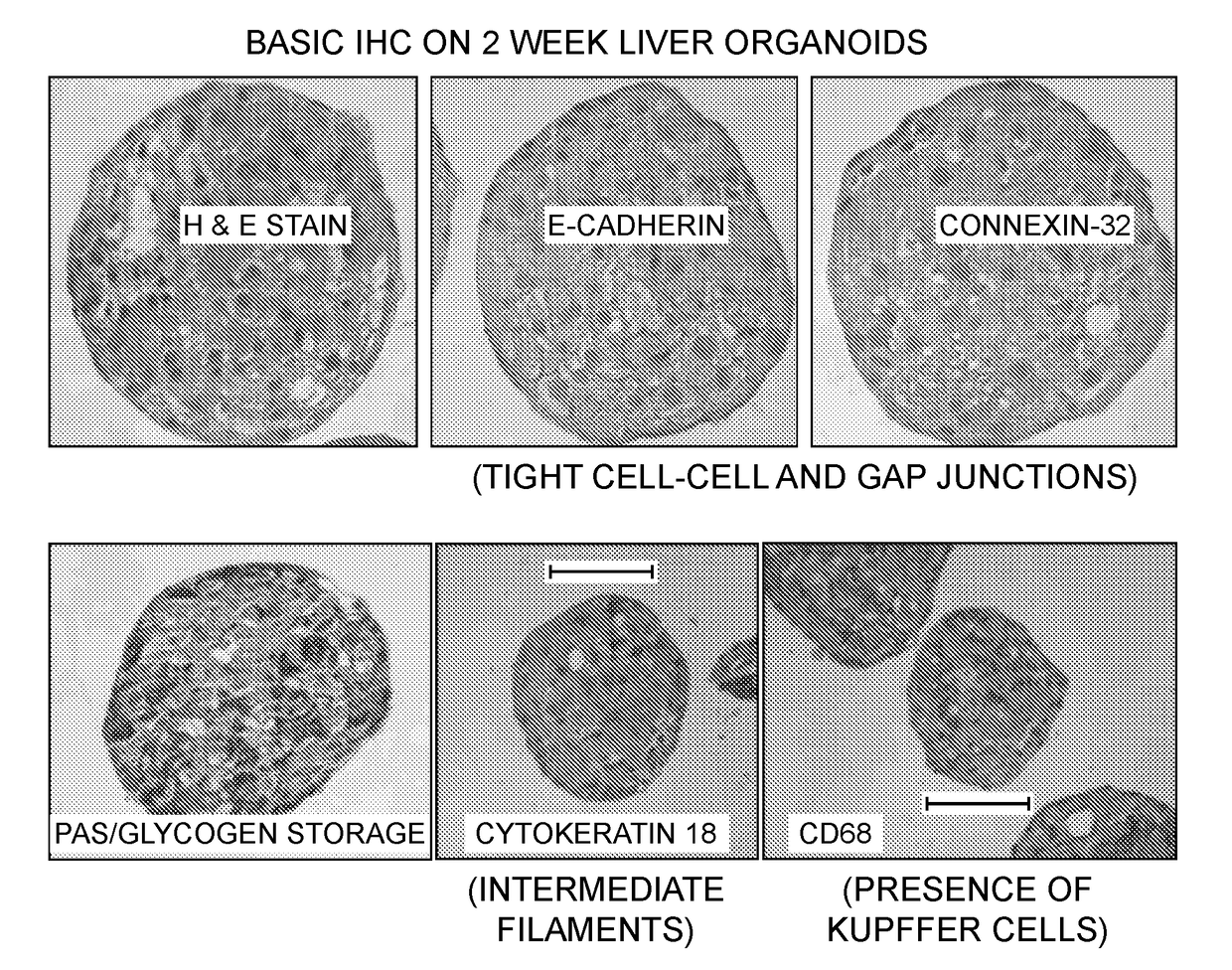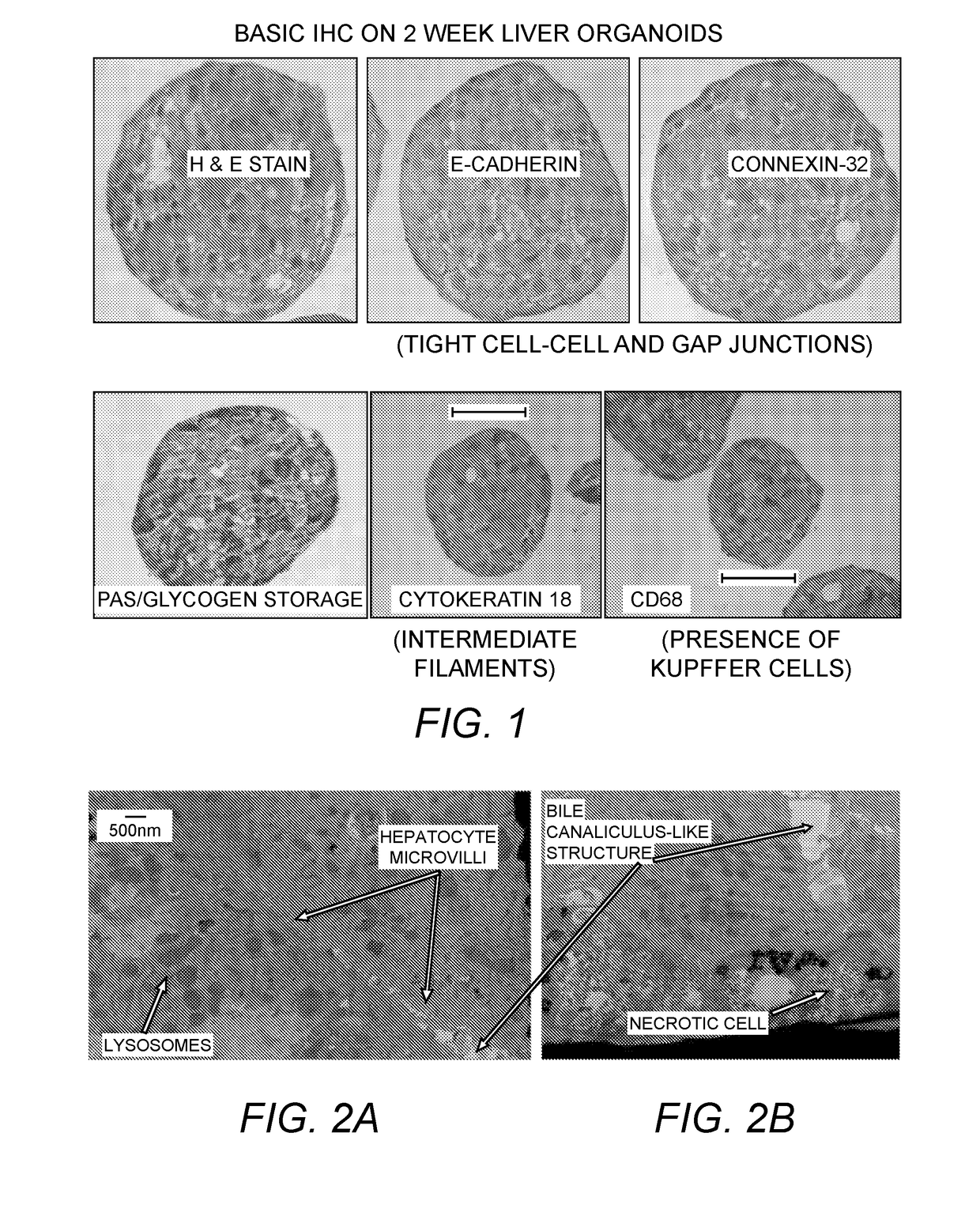Methods of producing in vitro liver constructs and uses thereof
a liver and construct technology, applied in the field of in vitro liver construct production, can solve the problems of low reproducibility, high variability, and inability to reproduce in vivo intercellular and supracellular structures found in conventional 2d systems
- Summary
- Abstract
- Description
- Claims
- Application Information
AI Technical Summary
Benefits of technology
Problems solved by technology
Method used
Image
Examples
examples
A. Materials.
[0058]Source of cells. Hepatocytes / cholangiocytes were obtained from Triangle Research Labs (6 Davis Drive, Research Triangle Park, N.C. USA 27709) as Product No. HUCP16. Kuppfer cells were obtained from Life Technologies / ThermoFisher Scientific (81 Wyman Street, Waltham, Mass. USA 02451) as Product No. HUKCCS. Hepatic Stellate cells were obtained from ScienCell (6076 Corte Del Cedro, Carlsbad, Calif. USA 92011) as Product No. HHSteC / 3830. Liver sinusoidal endothelial cells were obtained from ScienCell as Product No. HHSEC / 5000.
[0059]Organ Formation Media. Complete Hepatocyte culture medium (Lonza) containing 20% heat inactivated fetal bovine serum and 1 Ougiml rat tail collagen type I. The media is formulated as follows: To 500 ml of Lonza Hepatocyte Basal Culture Medium (product CC3197) are added single-quot supplements (product #CC4182) Ascorbic acid, bovine serum albumin (fatty acid free), human epidermal growth factor, transferrin, insulin and gentamycin in the qua...
PUM
 Login to View More
Login to View More Abstract
Description
Claims
Application Information
 Login to View More
Login to View More - R&D
- Intellectual Property
- Life Sciences
- Materials
- Tech Scout
- Unparalleled Data Quality
- Higher Quality Content
- 60% Fewer Hallucinations
Browse by: Latest US Patents, China's latest patents, Technical Efficacy Thesaurus, Application Domain, Technology Topic, Popular Technical Reports.
© 2025 PatSnap. All rights reserved.Legal|Privacy policy|Modern Slavery Act Transparency Statement|Sitemap|About US| Contact US: help@patsnap.com



